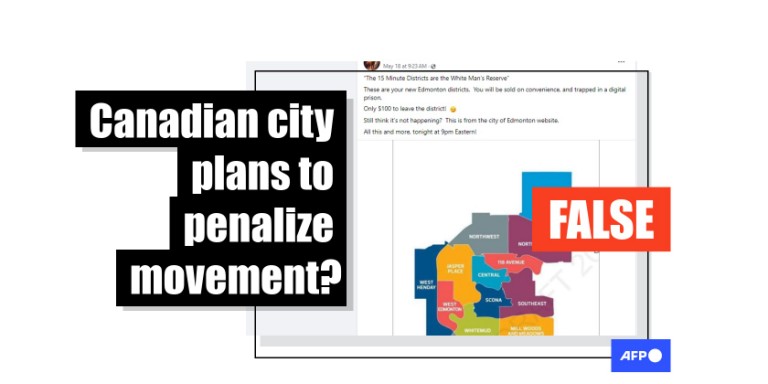
Edmonton hearings reignite false 15-minute city theories
- This article is more than one year old.
- Published on June 3, 2024 at 22:42
- 4 min read
- By Gwen Roley, AFP Canada
"Edmonton proposing several 15 minute cities where 50% of where you go has to be by public transit," the caption of a May 29, 2024 Instagram post claims.
The text accompanies a video from Canadian broadcaster CTV News, covering public hearings that started in Edmonton on May 28 (archived here).
Before and after the meetings, posts, often including maps of the city divided into districts, appeared across X, Facebook, Instagram, Threads, YouTube, Rumble and TikTok with claims that under the prospective updates, movement would be restricted, and fines would be issued for people wishing to use cars or travel long distances.
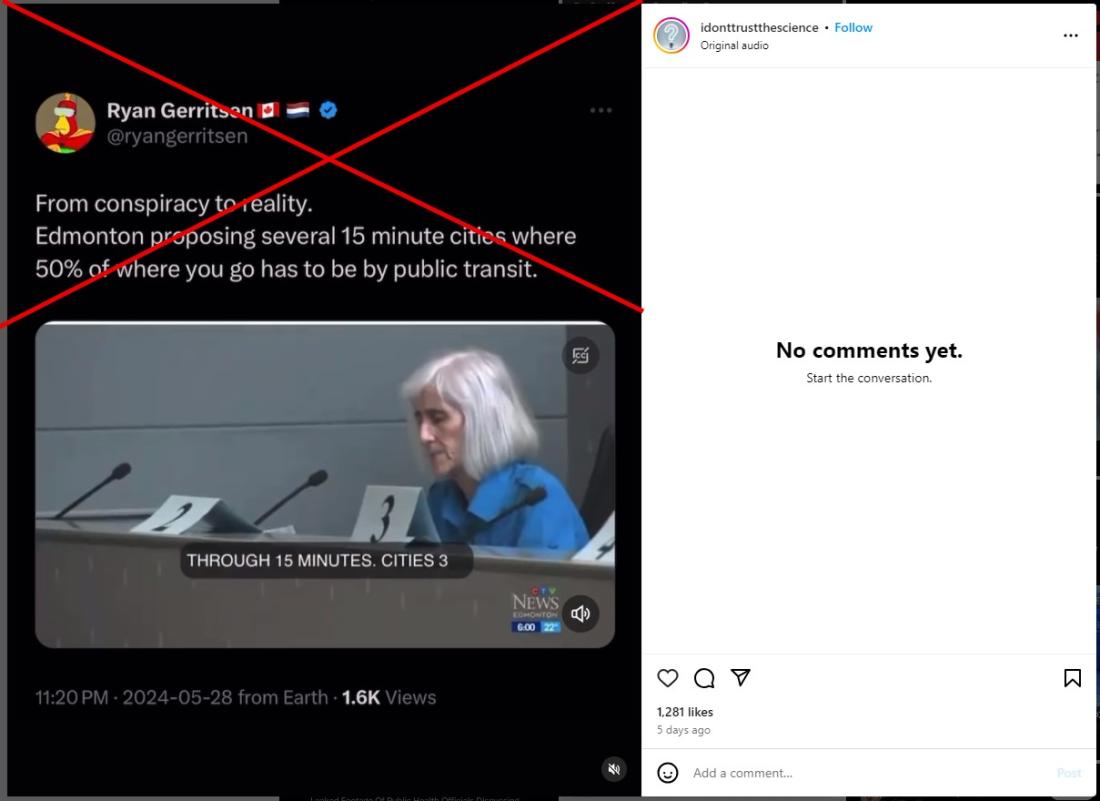
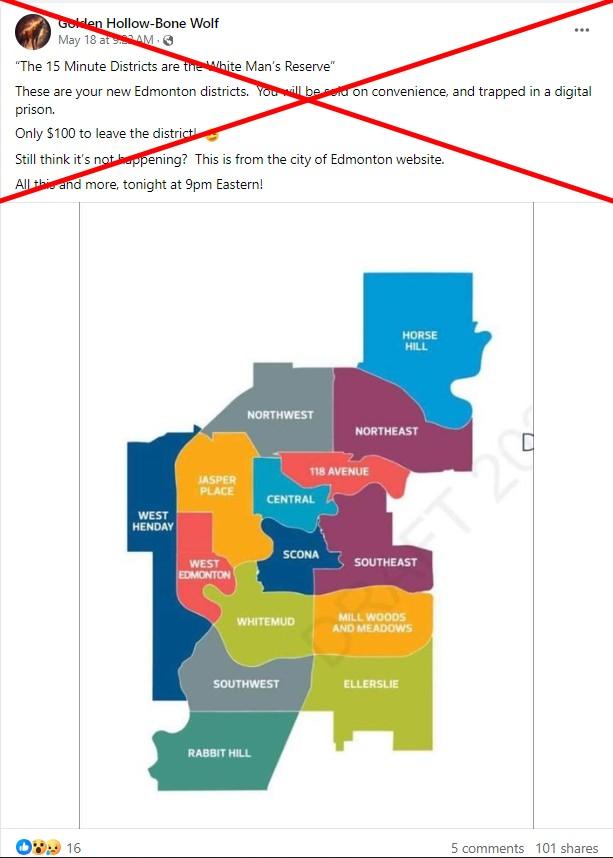
According to the City of Edmonton website, the hearings considered the proposed District Policy and 15-district plan, following the government's City Plan which was adopted in 2020 (archived here, here and here). The urban revamp proposals often reference 15-minute cities or communities, which have sparked unfounded claims of movement restriction in the past, including posts about Edmonton fact-checked by AFP in 2023.
Sean Bohle, a senior planner with the City of Edmonton, said the 15-minute city concept aims to design areas with access to all needs within a short commute (archived here) and was referenced in planning as a guiding goal, rather than a policy that would be forced on residents.
He said the 15-district plan would facilitate planning projects by creating zones within the city which would be managed individually, but this would not create any barriers restricting residents from traveling to different areas.
"There's no expectation that people will remain in a district," Bohle said. "It's mostly just to help us from an administrative perspective."
Districts concept
Bohle said the May 2024 hearings (archived here) examined concrete proposals for the 15-district plan after it was already outlined in the City Plan adopted in 2020. He said the zones were conceived by grouping together areas -- such as around the central downtown -- which could have distinct planning goals from other parts of the city in the future.
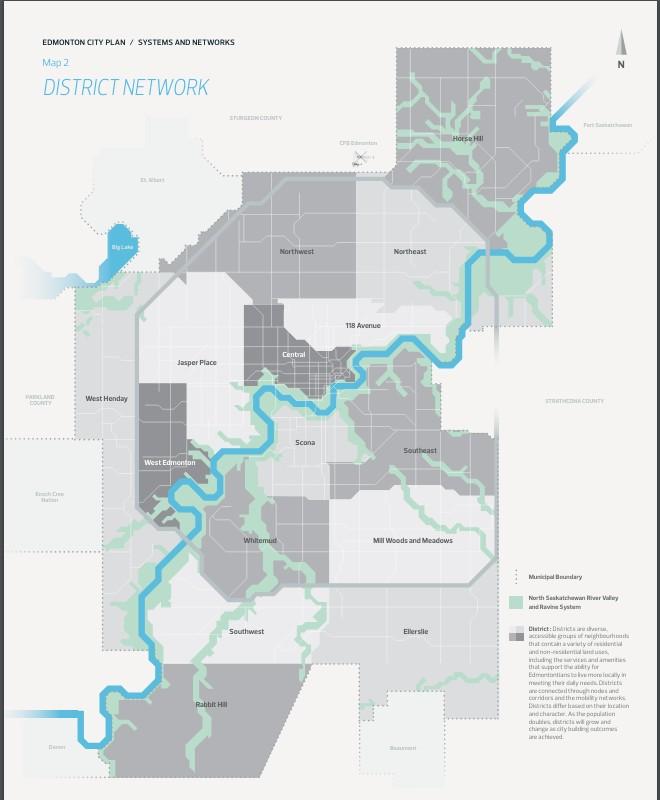
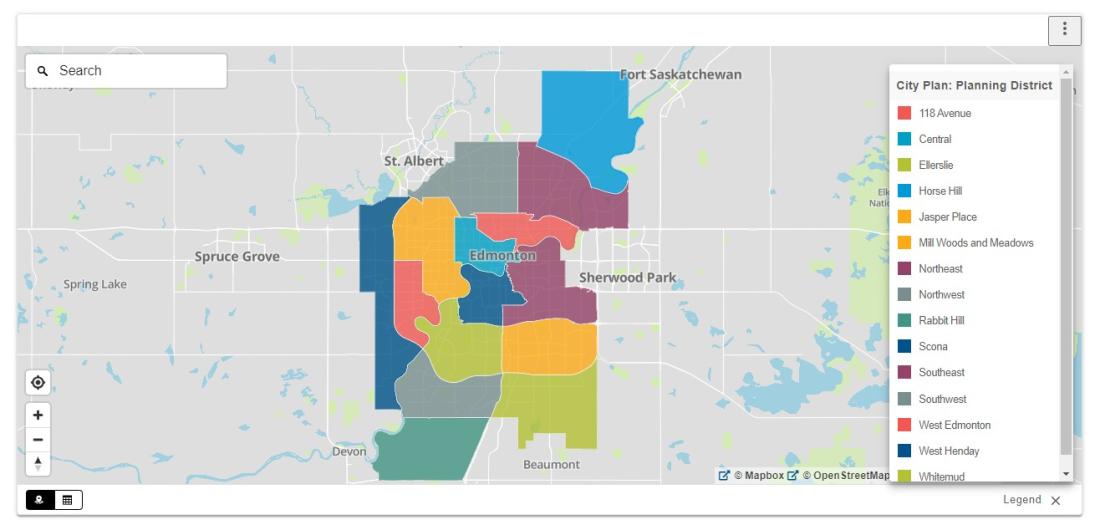
"It is just a more efficient way to grow," Bohle said. "The expansion of infrastructure can serve more places and we don't just scatter development everywhere."
He said the districts pitched for Edmonton could be compared to boroughs which administratively split up cities such as New York or Montreal (archived here and here), while not restricting or imposing fines for movement between certain areas. However, these other cities' boroughs usually have elected governments, which is not proposed for the Edmonton districts.
Documents discussing the District Policy, the 15-district plan or the City Plan, do not mention controlling movement.
Sandeep Agrawal, a professor in the School of Urban and Regional Planning at the University of Alberta (archived here), said that any types of restriction on travel between districts would not be legally permitted under the Canadian Charter of Rights and Freedoms (archived here).
"No level of the government can restrict people -- where to go, where to live, where to work and where to play," Agrawal said.
Transportation aspirations
Many of the misleading posts extrapolate on one of the City Plan's outlined goals -- to have 50 percent of trips undertaken on mass transit (archived here) -- by claiming that car use would be penalized. Bohle said the goal is for the city as a whole and does not target individuals' transportation habits.
"These are goals the city's trying to work towards and we hope that if we build a really desirable city, with great transportation options, that's how we will achieve that goal -- not by controlling individuals' choices," he said.
Agrawal agreed, saying Edmonton's transit objects were more about determining new transportation needs as the city grows, rather than taking away people's cars.
"There will not be any restriction placed by what it would do," he said.
Some online users questioned the push towards increased public transit usage in Edmonton, given that it would mean more exposure to the harsh conditions of Canadian winters. Agrawal said this is a valid concern and that there should be a concerted effort to provide more frequent transit stops with access to heating and plans for efficiently clearing pathways from snow.
"At the moment, this is just a concept, for it to actually bring to fruition, a lot has to be done," Agrawal said.
The hearings in Edmonton were originally scheduled to end on May 30, but the agenda was not completed and extended to June 3, with any required supplementary time programmed for June 25 (archived here). If the District Policy and 15-district plan passes the first and second readings this June, they will move to review by the Edmonton Metropolitan Review Board before seeing a final reading and vote by Edmonton City Council, which Bohle said would be in Fall 2024 at the earliest.
Read more of AFP's reporting on misinformation in Canada here.
Copyright © AFP 2017-2025. Any commercial use of this content requires a subscription. Click here to find out more.
Is there content that you would like AFP to fact-check? Get in touch.
Contact us
